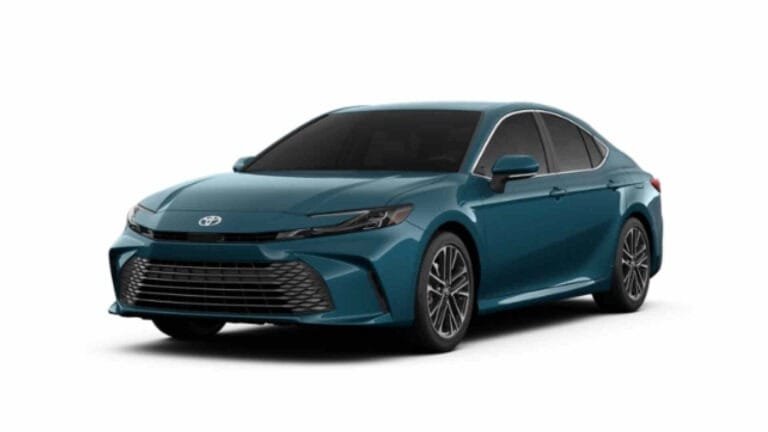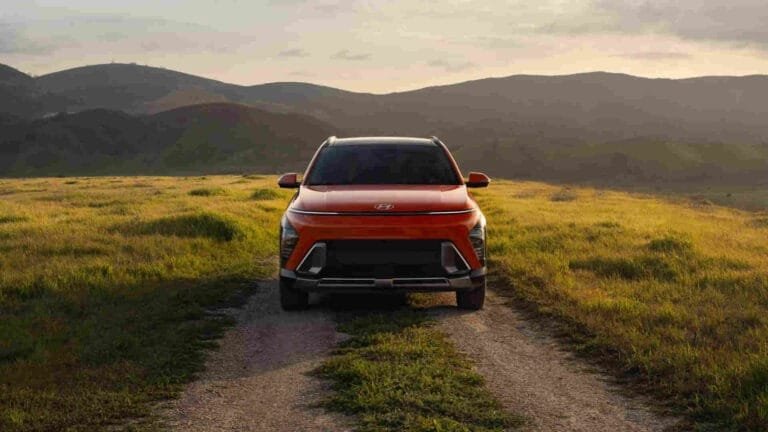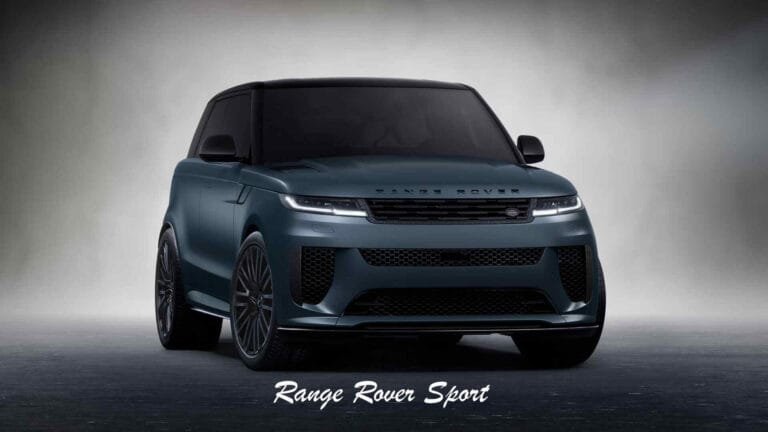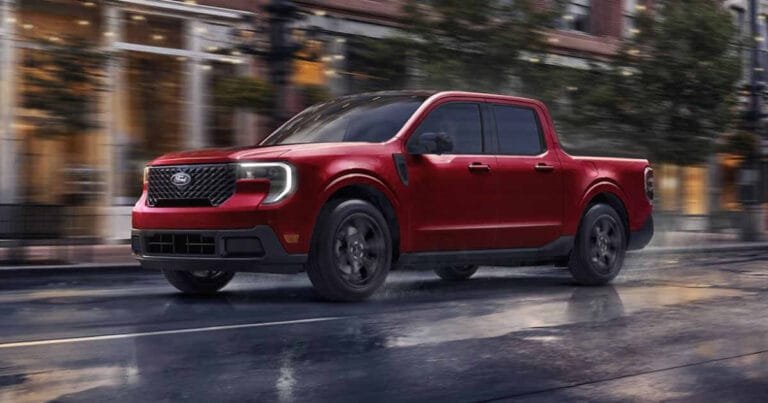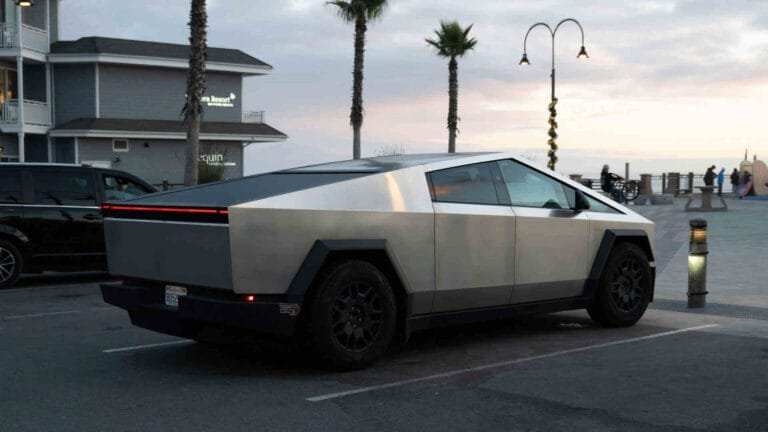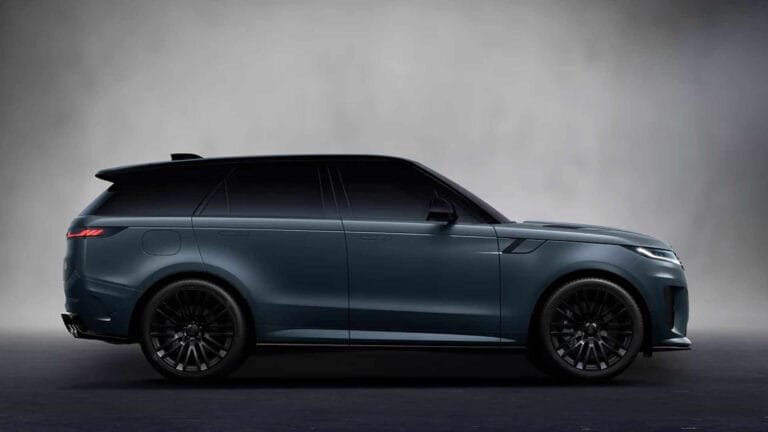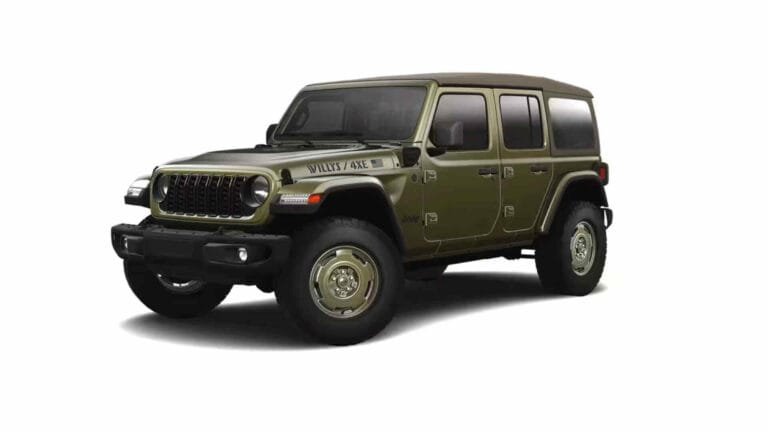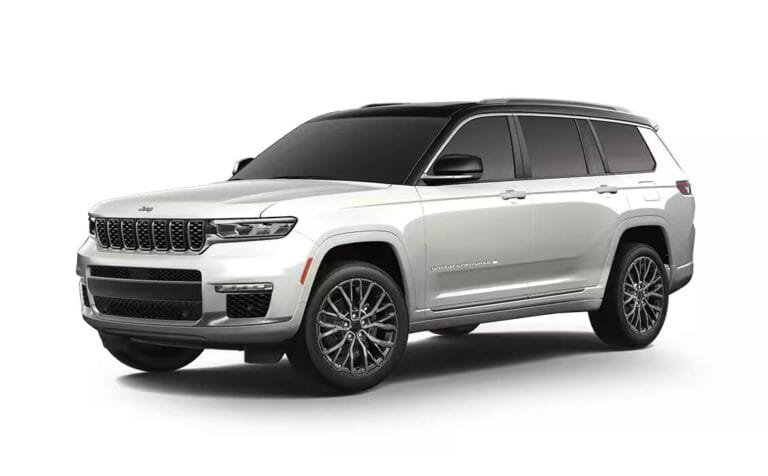Toyota Sequoia 2025
Exploring the 2025 Toyota Sequoia: Luxury, Power, and Practicality Redefined
What’s going on, Vehicle Tradelin? The Toyota Sequoia has been making waves in the full-size SUV market since its full redesign, and for the 2025 model year, Toyota is upping its game once again by adding more luxury features and even a new trim level. So, is this a great Japanese alternative to strong rivals like the refreshed Tahoe? Let’s go ahead and find out.
All right, so, as always, let’s start under the hood for the spec dump. You continue to have one powertrain option for 2025: the i-FORCE MAX hybrid system, producing 437 horsepower. That’s paired with a 10-speed automatic transmission, and with the four-wheel-drive system, we’re sitting at 20 MPG combined. Of course, we can’t wait to take it out on the road and show you what this is all like. We’ll also be getting things like our sound level reading and, after that, discussing resale and reliability. But let’s go ahead and close up the hood because we need to get into those 2025 changes.
Getting started here, I’m just going to go ahead and talk about the new trim level for 2025: the 1794 Edition. You probably recognize that from the Tundra; it’s making its way now to the Sequoia and will have some unique elements, including the front design, wheel options, and other details throughout the vehicle. We’ll go ahead and insert a picture so you can get a look at that. It’s going to be one of the top trim levels.
Now, today, what we have is the Platinum trim level. This is going to be the sportier kind of design, so you’ll notice we have the mesh grille up front with the full gloss black finish. We also have the gloss black Toyota badging, and down in the lower fascia, that’s also finished in gloss black

As far as our lighting is concerned, this model will come with the premium LED arrangement. So, it’s projector LEDs with a crystal design. You also have your daytime running light and sequential turn signal indicator, as well as fog lamps down in the middle.
Walking around to the back, you continue to have that nice, boxy, aggressive look. Since we have the Platinum, it is also blacked out with all of our badging back here, as well as this accent piece. We also have an exposed rear wiper. Drew is hopping inside so we can check out our taillights. As you can see, we have a really premium LED taillight setup. You have the brake light, dynamic turn signal, and LED reverse light. You get the sequential ability starting here on the Platinum and above.
I do want to point out that we have a new badge this year. This is the new i-FORCE MAX badge for 2025. Down here at the very bottom, all of this is finished in a nice gloss black. Your tow rating is really impressive with this vehicle. You can tow up to 9,500 lbs, and as tested today, we’re sitting at around 9,000 lbs, which is more than the Tahoe.
Just like with the grilles, you have a ton of different wheel options to choose from depending on which trim you pick. Most models will come with 20-inch alloy wheels, such as this Platinum. It’s got the gray finish overall. You can go up to 22-inch alloys if you get the Capstone example.
Rising above here, we have, of course, our i-FORCE MAX branding. In terms of mirrors, these are fully loaded across the board. You have blind-spot monitoring, power-folding, and auto-dimming on every single trim level. Special towing mirrors are also available. Now, here on the side, you can see that this Sequoia is certainly a very large SUV.
We’ll see how the space measures up a little later on. When it comes to safety systems, Toyota provides the entire gamut as standard equipment, which is certainly very nice. That even includes features like adaptive cruise control. But guys, there’s a really cool update on the inside that I can’t wait to show you, so let’s dive into that.
All right, now let’s move on to the inside. You do have a standard smart entry system on all Sequoias. This is, you know, Toyota’s typical key fob. You’ll see the mirrors fold out, and the power-deploying running boards will pop out. These are standard on the Capstone trim and available on most of the other high-end examples.
Taking a look at the interior, there are no major design changes; however, there are changes in the details for sure. Let’s start by talking about the materials and color options. Again, there are many trims available. You begin with fabric seats, move to faux leather on the middle trims, real leather on trims like this Platinum, and finally, the top-end Capstone comes with semi-aniline quilted leather seats. As you can see, there’s a refined look to this interior. We’ve got blue stitching and perforation, and the seats are nice and soft. This trim level offers 14 ways of power adjustment, including a power thigh extension, which is a very nice touch.
Let me also mention the 1794 Edition. It features a special interior color and trim, adding more leather details for a premium feel.
Overall, this is a very expensive SUV, but it comes with a lot of nice finishes inside. Let’s go ahead and fire it up using the standard push-button start.
All right, let’s dig into some individual details. We’ll start with the gauge cluster. This is a 12.3-inch full digital cluster, standard across the board. As you can see, the graphics are impressive and unique to this model. There are hybrid graphics, along with a tougher design compared to other Toyota products. Up top, on the Platinum trim and above, you also have a large head-up display with plenty of additional information
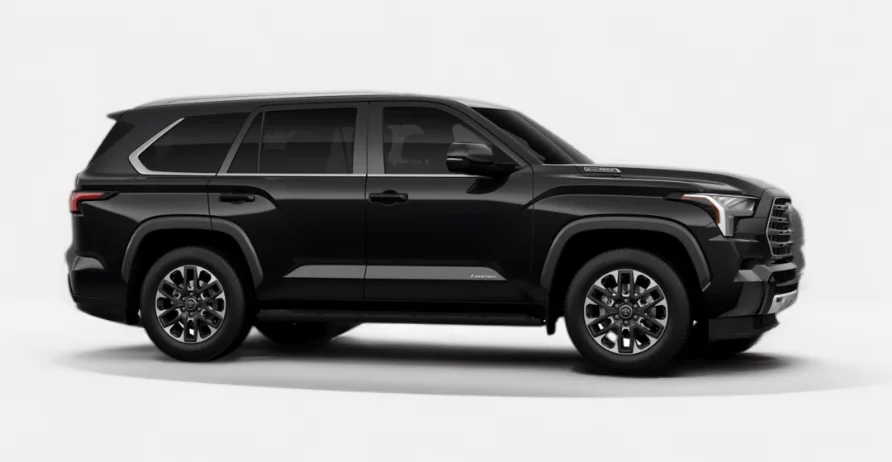
As we pull back, we’ve got rain-sensing wipers, a nice leather-wrapped steering wheel with a thick rim, perforated leather, and more blue stitching specific to the Platinum trim level. This steering wheel is power tilt and telescoping and comes heated, starting at the Limited trim level.
Good interior storage up front is essential in a large SUV like this, and Toyota delivers. First, you have a convenient tray that slides back for quick access to the console or flips up to reveal the entire compartment. You’ll notice it’s loaded with donuts—at Car Convections, we test console storage using donuts to measure volume. In this case, it holds all 24 donuts, the maximum score for our “donut test.”
In front of that, you’ll find cup holders and a large storage cubby. On the Platinum trim and above, there’s also an upright wireless phone charging pad. Nearby, you’ll see your parking brake and brake hold controls.
The shifter itself has a blocky, modern design. It’s a traditional style—pull back for Drive and bump to the left to shift manually. There are no paddle shifters on the steering wheel. When you shift into reverse, all models are equipped with a 360-degree camera system. This includes active trajectory views, a guideline for trailer hookups, and multiple camera angles accessible via the controls.
Behind the shifter, you have the drive mode control knob and four-wheel-drive settings.
Moving up to the climate controls, a three-zone automatic climate system is standard. Adjustments can be made easily with physical controls. Heated seats come standard, while ventilated seats are available starting with the Limited trim. Most models will also include seat ventilation.
In the same area, you’ll find the volume knob for the audio system. Upper-tier models feature the 14-speaker JBL sound system, which we have today.
The sound quality is decent, though more bass-heavy compared to other vehicles in this price range.
Next, let’s explore the main infotainment display. Most trims feature a 14-inch touchscreen with Toyota’s latest software. The large display provides easy-to-use shortcuts and a responsive interface. Wireless Android Auto and Apple CarPlay come standard across all models.
To access the new massaging seats, select “Car,” navigate to “Seat Controls,” click “Massage,” and choose the desired seat—available for both the driver and front passenger. You’ll find the same modes as in Lexus models, with adjustable intensity for a true luxury experience. The massage system targets both the back and seat, delivering excellent comfort.
Up top, we have the auto-dimming mirror with HomeLink integration. Additionally, a smart camera is integrated into the rearview mirror for enhanced visibility. For those who enjoy the open sky, there’s a large panoramic sunroof.
Now, let’s move to the rear seat area. As expected from a large SUV, the Sequoia offers ample space in the back, meeting the needs of passengers and families alike.
Even with the seat in its current position, I still have an impressive 9 to 12 inches of extra legroom. While the seats don’t slide forward or backward, they do recline significantly, adding an extra layer of comfort.
As for the seats themselves, this model is equipped with Captain’s Chairs, standard on higher-end trim levels. Between them, there’s a convenient storage cubby for small items, along with two cup holders. If you need more space for drinks, there are two additional cup holders conveniently located nearby.
Rear climate control is standard across all Sequoia models, ensuring comfort for everyone on board. On the Platinum trim and above, you’ll also find heated and ventilated rear seats—a feature absent in the Tahoe unless you upgrade to the Yukon. Additional conveniences include a USB-A and USB-C outlet, as well as a household-style outlet, offering no shortage of charging options. Ceiling-mounted vents further ensure efficient airflow for rear passengers.
Turning to the door trim, Toyota has prioritized quality materials. Most Sequoia trims include sunshades for added comfort, while the bottom of the door provides ample storage space, ideal for a couple of extra bottles.
Let’s move to the third row of the Sequoia. Accessing the third row is easy thanks to a lever that folds and tilts the second-row seat, though note that any installed child seat would need to be removed to use this mechanism.
Once seated in the third row, I can confirm that it’s quite spacious, particularly when the seat is slid all the way forward. Toyota has included a unique feature here: the third row can slide forward and back by up to 6 inches. In its furthest forward position, there’s about 28 inches of legroom, while sliding it back expands the legroom to a generous 34 inches, which is more than adequate for most adults. However, since the Sequoia lacks an independent rear suspension—unlike competitors such as the Tahoe and Expedition—the third-row seats don’t provide as much thigh support. This might be a consideration if ultimate comfort is a priority. Headroom measures approximately 35 inches, and the third row can accommodate up to three passengers.
In terms of features, the third row includes a hard armrest, reclining seats for added comfort, two cup holders, window sunshades, a small storage cubby, and ceiling-mounted vents for optimal airflow.
Overall, while the third row isn’t perfect, it’s more than acceptable for occasional use—especially if you’re seating in-laws or kids.
Now, let’s take a look at the tailgate. The Sequoia features a hands-free power tailgate, standard on most trim levels from the SR5 Premium and above. A thoughtful feature Toyota retained is the button that allows you to open the rear glass independently—a practical touch many drivers will appreciate. To open the tailgate, you can press a button under the lid or use the kick sensor located below.
When it comes to cargo space, you might be surprised to find that the Sequoia doesn’t offer as much room as you might expect. Behind the third row, it provides 22 cubic feet of space. Folding down the third-row seats expands this to 49 cubic feet.
How does this compare to the Chevy Tahoe, the Sequoia’s main rival? The Tahoe offers a significantly larger 122 cubic feet of total cargo space, resulting in a difference of about 30 cubic feet between the two models. This is an important factor to consider if you plan to haul a lot of gear.
However, Toyota has done a commendable job of maximizing the available space. For instance, buttons in the back allow you to fold down the third-row seats with just a press, making it easy to reconfigure the interior for larger items. Additionally, the Sequoia comes equipped with a versatile shelf system, enabling a dual-tiered storage setup for more flexible packing options.
